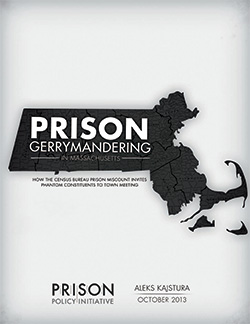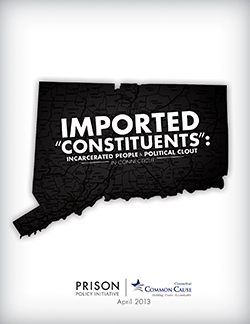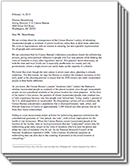Residents and Advocates Sue City of Cranston Over Redistricting Plan That Counts Incarcerated Population as Residents
Cranston's 2012 redistricting plan for the City Council and School Committee violates the one person, one vote principle of the U.S. Constitution.
February 19, 2014
Plan violates ‘one person, one vote’ principle of the U.S. Constitution
FOR IMMEDIATE RELEASE: Wednesday, February 19, 2014
Contact:
Steven Brown, ACLU of Rhode Island, riaclu@riaclu.org, 401 831-7171
Alex Amend, Dēmos, aamend@demos.org, 917-822-7405
Aleks Kajstura, Prison Policy Initiative, akajstura@prisonpolicy.org, 413-527-0845
Inga Sarda-Sorensen, ACLU National, media@aclu.org, 212-549-2666
CRANSTON, R.I. — Local residents joined the ACLU of Rhode Island today to sue the City of Cranston, charging that the 2012 redistricting plan for the City Council and School Committee violates the one person, one vote principle of the U.S. Constitution by counting incarcerated people in their prison location as if they were all residents of Cranston.
Because those incarcerated were counted as Cranston residents, three voters in the prison’s district have as much voting power as four voters in every other city district, according to Census Bureau data. Cranston residents Karen Davidson, Debbie Flitman, Eugene Perry, and Sylvia Weber have joined the ACLU of Rhode Island as plaintiffs in the case. They are represented in federal court by Dēmos, the Prison Policy Initiative, and the American Civil Liberties Union.
Plaintiff Davidson said today: “As a long-time resident and taxpayer of Cranston, I am deeply concerned that the City Council decided in 2012 to perpetuate this voting inequity, especially after the ACLU pointed out the constitutional problems with it. It is time for city officials to show some leadership and stop wasting taxpayers’ money defending themselves from legal challenges like this.”
The 2012 redistricting plan counted the population of Rhode Island’s only state prison complex, the Adult Correctional Institutions, as residents of Ward 6 even though the overwhelming majority of these individuals are not true residents of the district, but instead remain residents of their pre-incarceration community for virtually all legal purposes, including voting.
“Using the people incarcerated at the ACI to pad the resident population of Ward 6 is not only irrational, but also unconstitutional. Over 200 municipalities and counties across the country actively avoid this ‘prison gerrymandering’ when redistricting,” said Aleks Kajstura, Legal Director at the Prison Policy Initiative. “There is no reason for Cranston to give extra representation to a select group of residents just because they happen to live near a prison.”
According to Census Bureau data, without the incarcerated population, Ward 6 has only 10,209 true constituents. Yet those constituents now wield the same political power as the roughly 13,300 constituents in each of the other wards. This dilutes the voting strength and political influence of citizens residing outside of Ward 6, in clear violation of the Equal Protection requirements of Section 1 of the Fourteenth Amendment to the U.S. Constitution.
“The people incarcerated in Cranston cannot vote in local elections, visit with their elected officials, or use the public library,” said Adam Lioz, Demos counsel. “So, they should not be used to pad districts, skewing voting power in violation of the one person, one vote principle. The City Council should do the right thing and correct its redistricting process.”
“All the voters of Cranston should have an equal say in who their elected officials should be. When a citizen exercises their fundamental right to vote, they expect that their vote will be counted equally, not as if it were only three-fourths of another citizen’s vote. Cranston elected officials should stop playing games and restore fairness to the democratic system,” said Sean Young, staff attorney with the ACLU’s Voting Rights Project.
ACLU of Rhode Island executive director Steven Brown said, “In 2012, the ACLU testified before the City Council and urged members to draw district lines in a way that would protect the principle of ‘one person-one vote.’ More than 200 counties and municipalities facing prison gerrymandering have pro-actively addressed the problem. It is unfortunate that the Cranston City Council refused to do so, leaving us no choice but to file this lawsuit.”
The complaint, Davidson v. City of Cranston, was filed in U.S. District Court in Rhode Island. A copy of the complaint is here: http://www.prisonersofthecensus.org/davidson/complaint.pdf
The lawsuit is being handled locally by ACLU of RI volunteer attorney Lynette Labinger, who only two years ago in a highly-publicized case successfully sued Cranston officials over the display of a prayer banner in a high school auditorium.
###



 For Immediate Release: June 25, 2012
For Immediate Release: June 25, 2012



